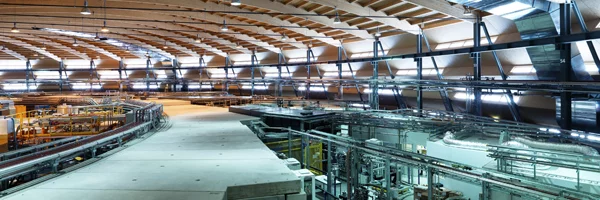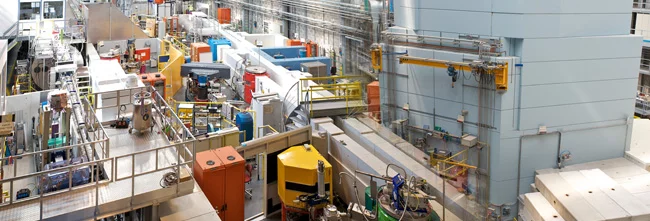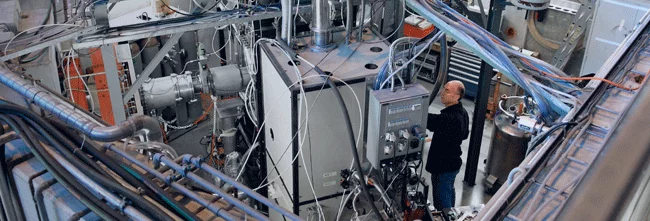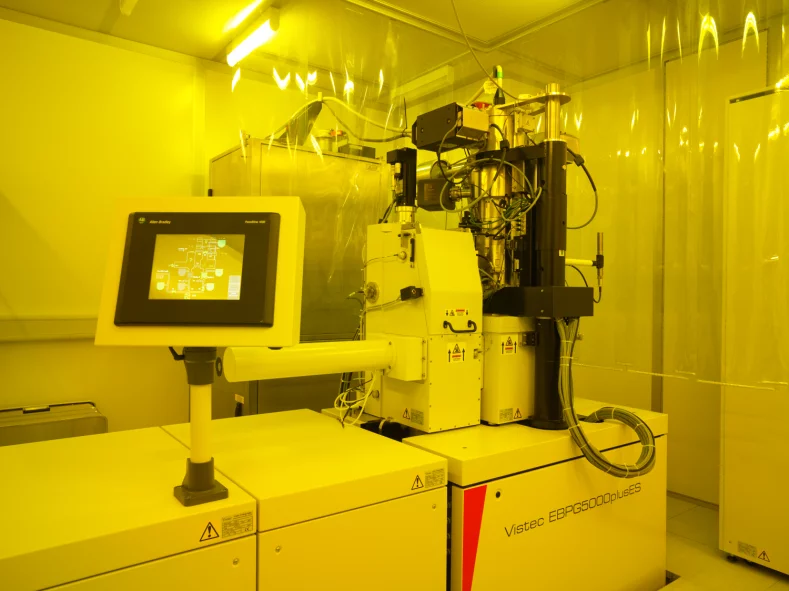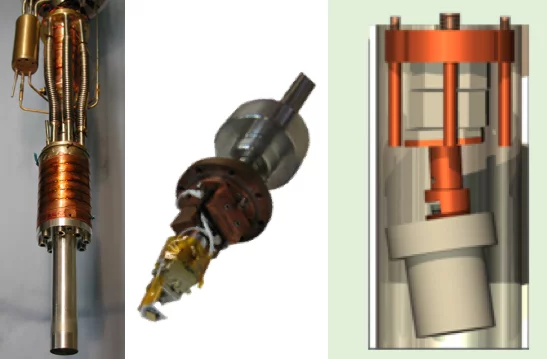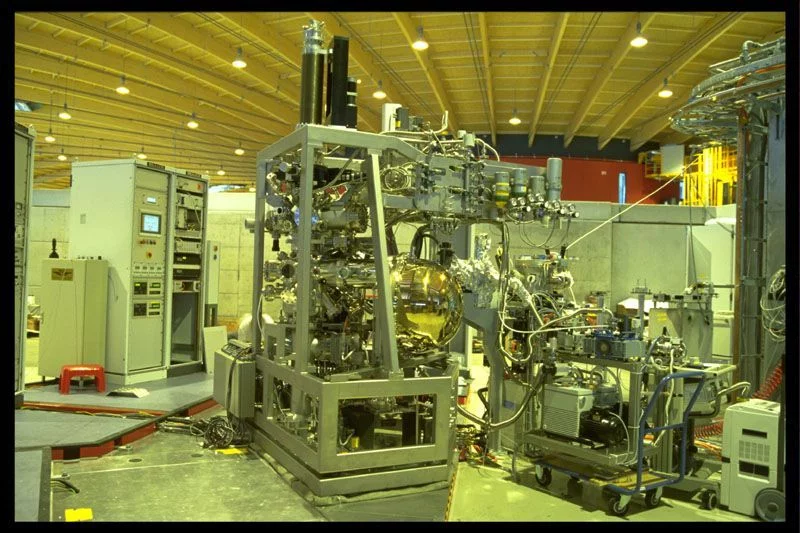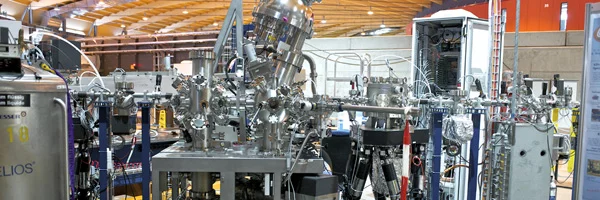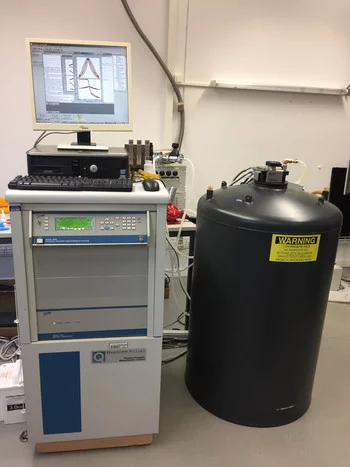SwissFEL
SwissFEL is one of only a handful of free-electrons laser facilities worldwide that is capable of producing the ultra-short, high intensity, hard x-ray pulses that are revolutionising x-ray science. The laser-like x-ray emission provides users with the possibility to probe the state of matter on atomic length and time scales opening the door to many experiments that will help to determine the relationship between electronic and atomic structure in novel quantum materials.Swiss Light Source
The Swiss Light Source (SLS) at the Paul Scherrer Institut is a third-generation synchrotron light source. With an energy of 2.4 GeV, it provides photon beams of high brightness for research in materials science, biology and chemistry, hosting 16 beam lines in total.SINQ: The Swiss Spallation Neutron Source
The Paul Scherrer Institute with SINQ is the national provider of large-scale infrastructure for neutron scattering, consisting of a powerful 1 MW spallation neutron source, state-of-the-art instruments for research using neutron spectroscopy, diffraction, small angle scattering, reflectometry and imaging, and of advanced sample environment. Neutron scattering is one of the most effective ways to obtain information on both, the structure and the dynamics of condensed matter paving the way for many discoveries in the field of quantum technology.SµS: Swiss Muon Source
Research at the Laboratory for Muon Spin Spectroscopy (LMU) uses positive and (occasionally) negative muons (µ+, µ-) as local magnetic probes in matter. The experimental technique referred to as µSR (for Muon-Spin Rotation/Relaxation) is universally applicable since the muons available at meson factories such as HIPA, the PSI proton accelerator complex, can be implanted in any material. LMU operates 6 state-of-the-art µSR instruments capable of covering a large range of experimental parameters such as temperature, pressure or magnetic field. The low energy muon instrument is a worldwide unique facility that allows to perform depth dependent µSR investigations on a nanometer scale to study e.g. heterostructures, thin films, low dimensional systems, near surface effects or nanoparticles.PSI clean room facilities
The PSI clean room facilities specialise in the research of nano and microfabricated structures, essential for realising quantum technology devices. The facilities include a surface sciences lab, a clean room, specialized 'industry grade' electron beam lithography equipment and x-ray interference lithography based at the Swiss Light Source.
Cryogenic sample environment
The precise control of external parameters like magnetic field and temperature over a wide parameter space is a prerequisite for any experimental investigation. In particular, the control of temperature is of critical importance to study quantum phenomena as it defines the energy and time scales of decoherence. We have a long lasting record of expertise in providing a broad range of sample environment to the SINQ user program. In addition, we contribute with our competence in cryogenics to running and emerging projects at PSI.Physical properties laboratory
The Physical Properties of Materials Group of the Laboratory for Multiscale Materials Experiments (NUM) prepares and characterizes advanced materials featuring novel structural, electric and magnetic properties. For these fundamental studies we use in-house equipment in combination with experiments at the PSI large scale facilities. The group operates and maintains the following equipment:
- PPMS 9T, Quantum Design (2 Devices)
- MPMS XL 7T, Quantum Design
For more information you can visit the Group web pages.
IR beamline X01DC (@SLS)
The IR beamline X01DC is hosted at the Swiss Light Source, The beamline makes use of 100ps pulses of synchrotron radiation, emitted with a repetition rate of 500MHz. While IR spectroscopy is mainly used to investigate the chemical composition of samples, with common applications in astronomy, biology, chemistry, and forensic sciences, at X01DC it is used with low temperature and magnetic field sample environments to investigate low energy quantum states and low energy excitations in the condensed phase. We have three experimental endstations:
- A high resolution transmission Fourier transform interferometer setup.
- A transmission / reflection spectroscopy setup for the investigation of condensed matter
- A synchronized infrared pump-probe spectroscopy setup for the investigation of dynamic solid-state properties.

